Soundscape Research Brings Fulbright Visiting Scholar Dr. Christina Mediastika to Purdue FNR
“Sound is the vocabulary of nature.” — Pierre Schaeffer
Whether it is the unique tone of a particular voice, the comforting notes of a lullaby, the song of a particular bird species or the familiar rhythms of a city, sound is all around us.
For Dr. Christina Mediastika, it was the sound of music that shaped her childhood in Indonesia. It was also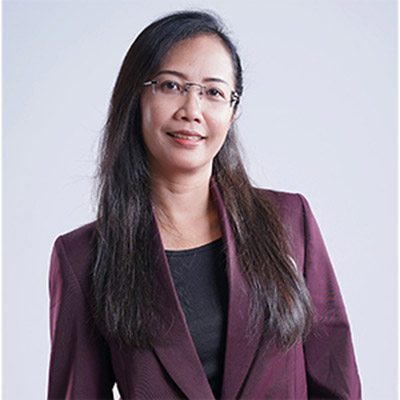 the sounds of the city that distracted from that music that prompted her to look at sound in a new way.
the sounds of the city that distracted from that music that prompted her to look at sound in a new way.
Mediastika grew up in Yogyakarta, Indonesia, a small city in the sultanate kingdom on the island of Java. The province of Yogyakarta is unique in its governmental structure, its culture and its traditions. One of those traditions, a cultural music called gamelan, provided part of the soundtrack to Mediastika’s youth. “I heard it frequently and it is really beautiful,” she recalled.
According to UNESCO, gamelan refers to the traditional Indonesian percussion orchestra consisting primarily of ornate, percussive instruments made of hand-forged metal. The ensemble typically includes xylophones, gongs, gong-chimes, drums, cymbals, string instruments and bamboo flutes. Gamelan music follows precise rules and techniques regarding tuning, layout, rhythmic and metric patterns and performance.
Beyond gamelan, Mediastika also had a personal connection to sound as a vocalist, beginning as early as kindergarten.
“Maybe the teacher thought I had a good voice, I don’t know, but I was selected as a solo singer when I was very little,” she said. “I love sound, maybe because of that. I also wanted to play music, but, at the time, musical instruments were quite expensive and asking my parents to buy me even a simple instrument such as a guitar or violin was unaffordable. So, I just ended up singing.”
After she graduated from senior high school, Mediastika found a career opportunity as a professional announcer at a broadcasting station in Yogyakarta in order to “have more money and not become a burden on my parents.” She would play music, sometimes sing, and share information on the station, but often found herself distracted by the noise she heard coming from outside the studio that would interfere with her work.
“The broadcasting station was in the middle of the city and I could hear the noise from outside because the quality of the walls and doors in the building was not good,” Mediastika explains. “I was annoyed by the noise and thought what is wrong, what has happened with this building? It is supposed to be sealed and isolated so that as an announcer I can work peacefully. The (outside) sound was going into the microphone and was disturbing. That is the point that I started to learn more about sound and wanted to know more about how to make the building better acoustically.”
During this time, Mediastika also was attending Gadjah Mada University, the oldest, largest and highest ranked university in Indonesia, studying architecture.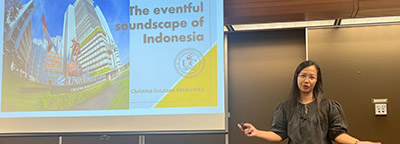
While the two may seem related, Mediastika is quick to note that she found architecture through non-traditional means.
“Senior high school chemistry was the subject that I got the lowest mark on, so when my parents sent me to the university, I wanted to go into engineering or something technical, but I didn’t want to meet chemistry at all during my studies,” Mediastika shared with a laugh. “And so, I found architecture. I remember worrying at first because I am not good in drawing, even though my father is, but I thought, I could learn that, so I did.”
Her studies in architecture required a midterm and a final project. Mediastika based both of hers on architecture as it related to sound quality. First, due to her experience at the broadcasting station, she decided to engage herself in finding out what was wrong with the building, the windows and so on. “I read books and joined courses dealing with sound and got a very good mark on the report,” she shared.
For her final project, Mediastika designed a musical auditorium for the city of Yogyakarta, because one did not exist at that time, back in the 1990s.
“I realized after that I didn’t know many Indonesian scientists or lecturers who came from architecture or urban science that did research in or were interested in sound,” she said. “That made me stick to it, because there were not many experts. Now when people need an expert in sound, they will invite me, because it is so rare.”
After graduating from Gadjah Mada, Mediastika applied to work at Atma Jaya Yogyakarta University. As luck would have it, Christina’s timing was perfect to take advantage of an even larger opportunity.
“When I arrived, they already had funds for someone to be sent to study abroad, but that person wasn’t ready,” Mediastika said. “They asked if I could take that person’s place and go. I had just been working a year and I had no plan at all. They said, if you are ready, go, if not, we will give it to someone else. So, I decided it was a good chance and I was ready. The foundation from that university sent me everywhere I wanted to go. My senior (mentor) had graduated from a UK (United Kingdom) university and she shared a very thick prospectus about the universities in the UK. I read it one by one until I found out that there was a university in Glasgow, Scotland, that had a professor dealing with sound. I applied for three universities and the one I got (accepted to) was Strathclyde University in Glasgow. I took an English test and I passed and they said I could come.”
Mediastika arrived in Scotland in January of 1997 as a master’s student. She had a boyfriend back home in Indonesia and a plan to study for one or two years maximum and then return home. But, life again dropped another opportunity in her lap, just six months after beginning in Glasgow.
“In September, my supervisor asked me to come to his office and said, your work is very good, I am offering you a chance to transfer to a PhD,” Mediastika remembered. “He said ‘You don’t need to finish your master’s, just go on and continue the research until you get a PhD. The consequences are very risky. If you can’t finish both, then you go home with nothing.’”
With her supervisor’s letter of recommendation in hand, Mediastika consulted with the foundation who gave her the grant to study in Glasgow, her home institution and her family. Eventually, she decided the chance was too good to pass up, so she found a scholarship for her boyfriend to study in the UK as well. But, before he could join her abroad, Christina returned home and the two were married. She promised her supervisor that because her research was related to the acoustic conditions in Indonesia, she would also collect data while she was back home.
Despite the change in plans, Mediastika completed her master’s and PhD in just three years all while working full-time at a restaurant in Glasgow due to a financial crisis in Indonesia that threatened her grant funding. In 1998, the dollar went from being worth 2,000 rupiahs to more than 10,000 rupiahs and her funding agency asked her to delay her studies. Instead, with the endorsement of her restaurant supervisor, Christina switched from a student visa to a working visa and successfully balanced her work and her degree.
“I always remembered that someone was paying for me, even when it was my parents, that it was not my money, so I needed to be good and responsible and make them proud,” Mediastika said. “Even though they could support me or they could extend the grant, I wouldn’t want them do that, because they should keep the money for someone else.”
While studying in Glasgow, Mediastika was able to compare the metropolitan city to her home back in Indonesia and gather lessons that could be applied from the developed country’s architecture to land use and noise management.
“Glasgow is a big, metropolitan, noisy city in Scotland,” Mediastika explained. “Everything was regular there - the transport, the people, the activity, how they discipline themselves and manage the environment - but it is very different from Indonesia. I soon realized that while I could learn these things, they were not things I could directly bring home and implement because the culture is different. I realized that Indonesians liked to engage socially, which is not the case in a developed country. When I would go between my apartment, my campus and the restaurant that I worked at, I always passed through a city park, so I learned how people enjoyed the park and what they did there, which is very different than what Indonesians do.
“Because my PhD is related to sound, I wrote many references about the ways Indonesia could learn from the developed country on how we can provide building materials, design buildings and build environments similar to what the developed countries have done. It really opened my perspective and I had a lot of imagination. But, then culture shock happened, because when I shared my thoughts, experiences and knowledge with my colleagues in Indonesia, they didn’t care. I was really depressed because I was doing something that was not important to them.”
The disinterest of her colleagues and the general lack of interest in adopting building practices of developed countries were obstacles to Mediastika’s dream of making a difference in soundscapes in Indonesia. She also faced barriers in getting her research published, due to the subject spanning multiple areas of study, and also due to her lack of writing experience.
“I stepped back and said do I really need to continue to do this research because it seems very difficult,” Mediastika shared. “Even when I tried to write papers at that time, I didn’t have any experience in writing and publishing internationally because of my English barrier. I tried to send my papers to an Indonesian architectural journal, but that was not easy because they thought that sound was not really correlated to architecture. And when I sent it to an urban design journal, they said is it really a part of urban design? I was struggling, but I did learn a lot from what happened in a developed country. And starting from that time, I frequently traveled abroad.”
In 2012, after nearly 18 years at Atma Jaya Yogyakarta, Christina moved to the city of Surabaya, when her husband’s job relocated the family to the city, where she joined the faculty as a lecturer at Universitas Ciputra Surabaya. It took more than three years for the government, namely the Ministry of Education in Indonesia, to grant her professorship at Ciputra.
In the Indonesian system, professorship is not designated by the institution or university, but by the central government. It is not related to the content of one’s work, but the administrative side. The submission for professorship goes from the institution to the regional area and then nationally and is “very scrutinized.”
While Mediastika was awaiting the transition from lecturer to professor, she also transitioned her research focus from acoustic building materials to soundscapes, which is related to the people directly.
“I stopped conducting research related to acoustical building material in 2015, just a year before my professorship,” Mediastika said. “I realized that if I kept doing research about building materials, people, especially in Indonesia, were not interested in it. I changed from a quantitative approach to qualitative, from being an expert in acoustic building materials to soundscapes, and it has gradually worked. I involve the community in my research. I invite people to have a discussion, I interview them and so on. So now, I work on soundscapes.”
In order to learn more about the field of soundscapes, Mediastika decided to apply to be a visiting scholar in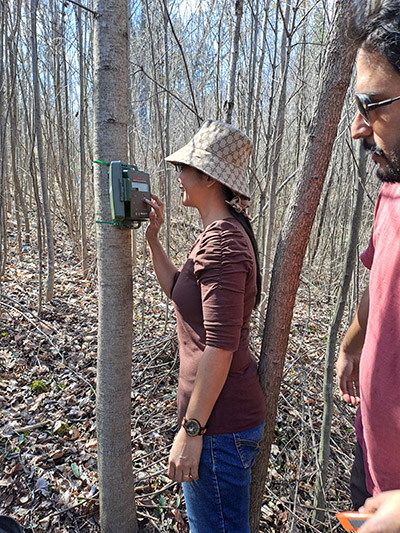 the United States through the Fulbright program after reading about the opportunity in an online newspaper.
the United States through the Fulbright program after reading about the opportunity in an online newspaper.
“Previously I thought Fulbright only sent lecturers who wanted to study for their PhD, but then I checked the Fulbright website in Indonesia and found out that it was also possible for me to apply,” she said. “I tried to find Fulbright alumni from my university and no one came up, so I knew I could be the first. I knew it would be difficult and I didn’t know if I was going to cut it, but down in my heart, I felt like if I could carry it, it would be a new stepping point for my university.”
Mediastika needed to find a mentor in the field of soundscapes in the United States. A google search brought up Dr. Bryan Pijanowski’s name. In reading his biography, Christina not only found a mentor, but learned that the field of soundscapes is a very broad subject, and not just focused on noise as she originally thought.
“I had focused myself on urban soundscapes, which is the case of Indonesia, but Indonesia is also a big country with forests in Borneo and Sumatra that need taken care of,” Mediastika noted. “I thought, even though nature soundscapes is not my area, I could learn something new from Dr. Pijanowski, a soundscape ecology expert.”
Christina emailed Pijanowski out of the blue introducing herself and her interest and received a positive response within 24 hours. She then moved forward in the process of applying for the Fulbright visiting scholar grant with Pijanowski’s guidance. It took more than a year before an email came with the news that Mediastika had received the Fulbright. The application had to clear the Indonesian selection committee, another committee in the United States and the IIE, a global not-for-profit organization that facilitates international exchanges.
Once approved, Mediastika had to negotiate with the home institution to continue teaching her courses online while she was away, but once those details were worked out, she had their full support.
“Everyone was happy, because I am the first Fulbright visiting scholar from my university in Indonesia,” she said proudly. “The University is very supportive knowing that I am the first. They are really proud of me and for the University, and they really expect me to come home and share the experience and also share the possibility of other grants my colleagues can apply for.”
The Fulbright is Mediastika’s third visiting scholar grant, following one from the Ministry of Education in Indonesia which sent her to National University of Singapore for four months in 2009 and second which saw her take a visiting professor position at the Universiti Teknologi Malaysia in 2018. However, this is the furthest her work has taken her away from her husband and two children. It also challenged her to refresh her English language skills after years of dormancy following her time in Glasgow as a graduate student.
Mediastika finally arrived in the United States in January 2024 with the plan to stay through April and the goal of absorbing as much information as possible from her new mentor, Dr. Pijanowski. The Center for Global Soundscapes, however, offered Christina much more than she originally thought.
“I mentioned in the Fulbright proposal that I would learn something new from Purdue, Indiana and West Lafayette specifically, about how we Indonesians could improve our sound condition,” she explained. “Even though Indonesia is an urban area, maybe it is possible for us to bring a little nature into town as we have very little nature sounds there, maybe 15 percent. I wanted to learn something about how we can manage our sound environment more properly, improving the condition of the past sounds that are gradually diminishing because of traffic noise. I learned that noise is also an issue in developed countries like the U.S., but it is managed better as the government provides direct reporting channels when a member of the community needs to report noise issues, which is not the case in Indonesia.”
Beyond the lessons Mediastika learned about soundscapes, she also gained a lot of insight from her fellow lab members.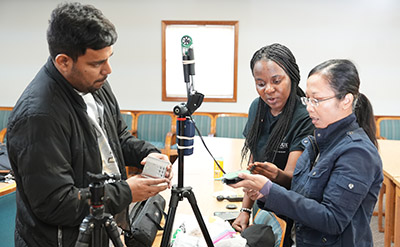
“I only expected to work with Dr. Pijanowski writing a paper, maybe conducting field work or collecting data related to nature, but he put me in a lab to discuss and work together with colleagues and hear their presentations about what they do,” Mediastika shared. “That was really meaningful to me, learning many things that I never knew before from other researchers in the lab. Working in the lab and being involved in some of the lab's projects, I also learned that working as a team needs commitment and that each member should work hand-in-hand to achieve the project's goals. The weekly lab meeting, the hard work of each lab member and the disciplined rhythm practiced by Dr. Pijanowski in leading and organizing the lab are things that are not commonly found in Indonesian research institutions. The way Dr. Pijanowski leads and organizes the CGS lab amazed me deeply. It is something that I learned and brought home to copy when someday my university facilitates me to have a lab. The quiet and safe environment at Purdue and in West Lafayette also was a perfect for a campus community in which to study, work and socialize.”
During her time in Indiana, Mediastika was a part of CGS projects ranging from urban soundscape planning in U.S. cities to setup and monitoring of sound related to the solar eclipse. She also was able to introduce her work, her university and the country of Indonesia to Purdue students, faculty and staff.
She spoke to Dr. Kristen Bellisario’s HONR 31300 Sonic Biodiversity class in the John Martinson Honors College (JMHC), sharing about noise issues, the acceptance of noise by Indonesian people and her research which illustrated the visualization of sound metrics in a heat map that the students were studying their lab.
"Dr. Mediastika discussed noise issues from a refreshing multicultural perspective,” said Bellisario, director of the HIFI Lab in the JMHC. “Students, who primarily come from computing and engineering backgrounds, were impressed by her interactive tracking software and employed these concepts into their final student projects."
Mediastika also spoke about “The Eventful Soundscape of Indonesia” in a Forestry and Natural Resources department seminar and to the International Development Working Group (IDWG), including Dr. Gerald Shively. She also was invited to give lectures in the Department of Landscape Architecture by Dr. Aaron Thompson and in the Department of Interior Design by Drs. Barbara Young and Laura Bittner.
“Christina presented to the International Development Working Group, which is a group of faculty and staff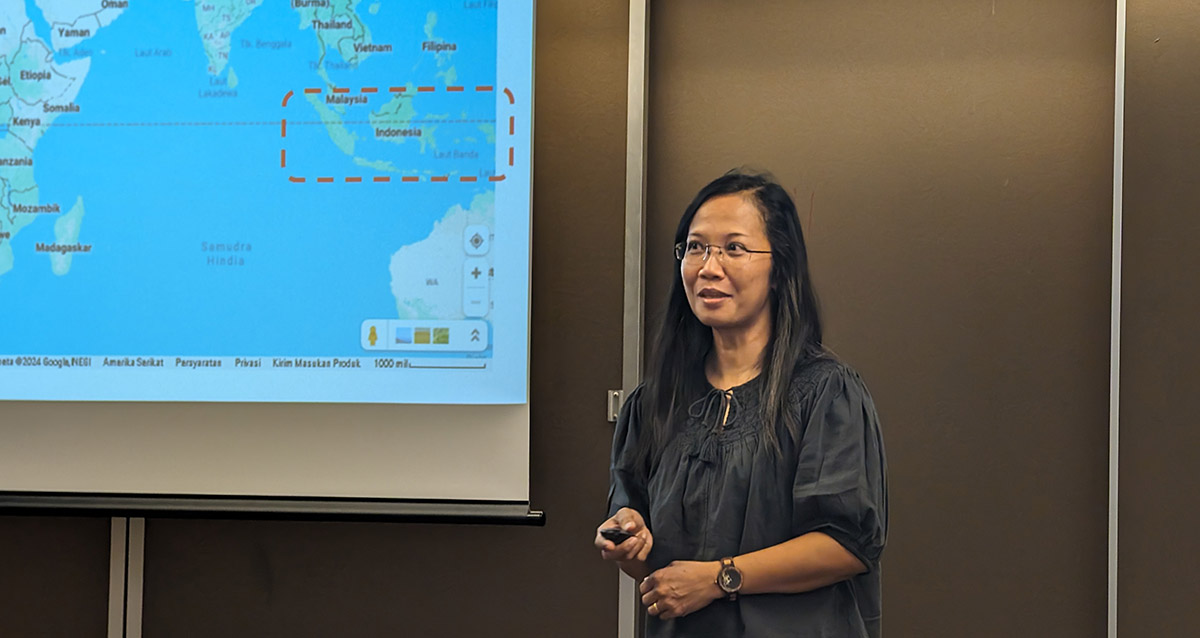 with an interest in International Development,” Shively explained. “It was a well-attended lecture about the process of economic development and how economic development influences cultural change and adaptation. She gave the group insights into an area of the world that is not always well known or understood, opening our eyes to a range of issues, sparking lively discussion.”
with an interest in International Development,” Shively explained. “It was a well-attended lecture about the process of economic development and how economic development influences cultural change and adaptation. She gave the group insights into an area of the world that is not always well known or understood, opening our eyes to a range of issues, sparking lively discussion.”
Mediastika is in the process of co-authoring a paper with Pijanowski on regulations in the U.S. which manage noise, including a comparison to regulations in developing countries. This project involved researching past publications on how other developing countries dealt with noise and how that could be applied to Indonesia.
“I will have new material to share and hopefully this will help with my campaign to make Indonesians aware about sound and regulations and bring about better noise awareness,” Mediastika stated. “Hopefully we can present the paper and people will read it and maybe I will even have the chance to be invited by the government of Indonesia or other universities to talk about it.”
Pijanowski is grateful for all that Mediastika brought to the lab in terms of knowledge and impact and is excited to continue his partnership with her beyond her Fulbright visiting scholar assignment.
“Dr. Mediastika (“Evi”) brought a unique perspective to our understanding of the common sounds of cities in places like Indonesia,” Pijanowski said. “Her careful assessment of all sounds in these places incased my understanding of the role that cultural sounds from families, small groups and communities, have on what we may label as “noise.” Community group meetings are filled with many sonic expressions that can be made throughout the day and night. Some of these are also ancient traditions, some of which are being lost. We have few analogues to these here in the U.S. and most of the developed world.
“Evi’s passion for being able to find ways to reduce the noise footprint in the developing world was inspiring to us all. Evi was also interested in expanding her engagement across the university, meeting with faculty, students and staff from many departments in the College of Agriculture, the Honors College and the College of Liberal Arts. We plan on continuing our collaborations which started during her stay with us.”
 Dr. Christina Mediastika stands amidst members of the Center for Global Soundscapes lab, observing the solar eclipse in April 2024
Dr. Christina Mediastika stands amidst members of the Center for Global Soundscapes lab, observing the solar eclipse in April 2024 





